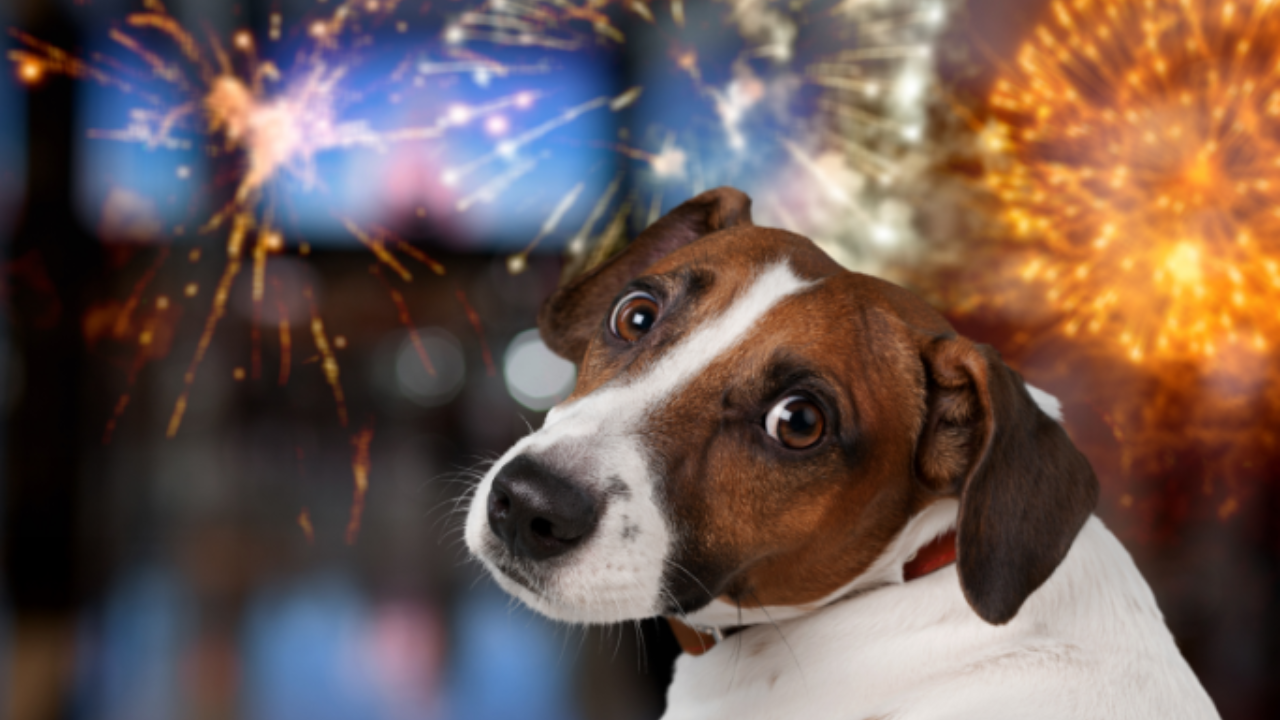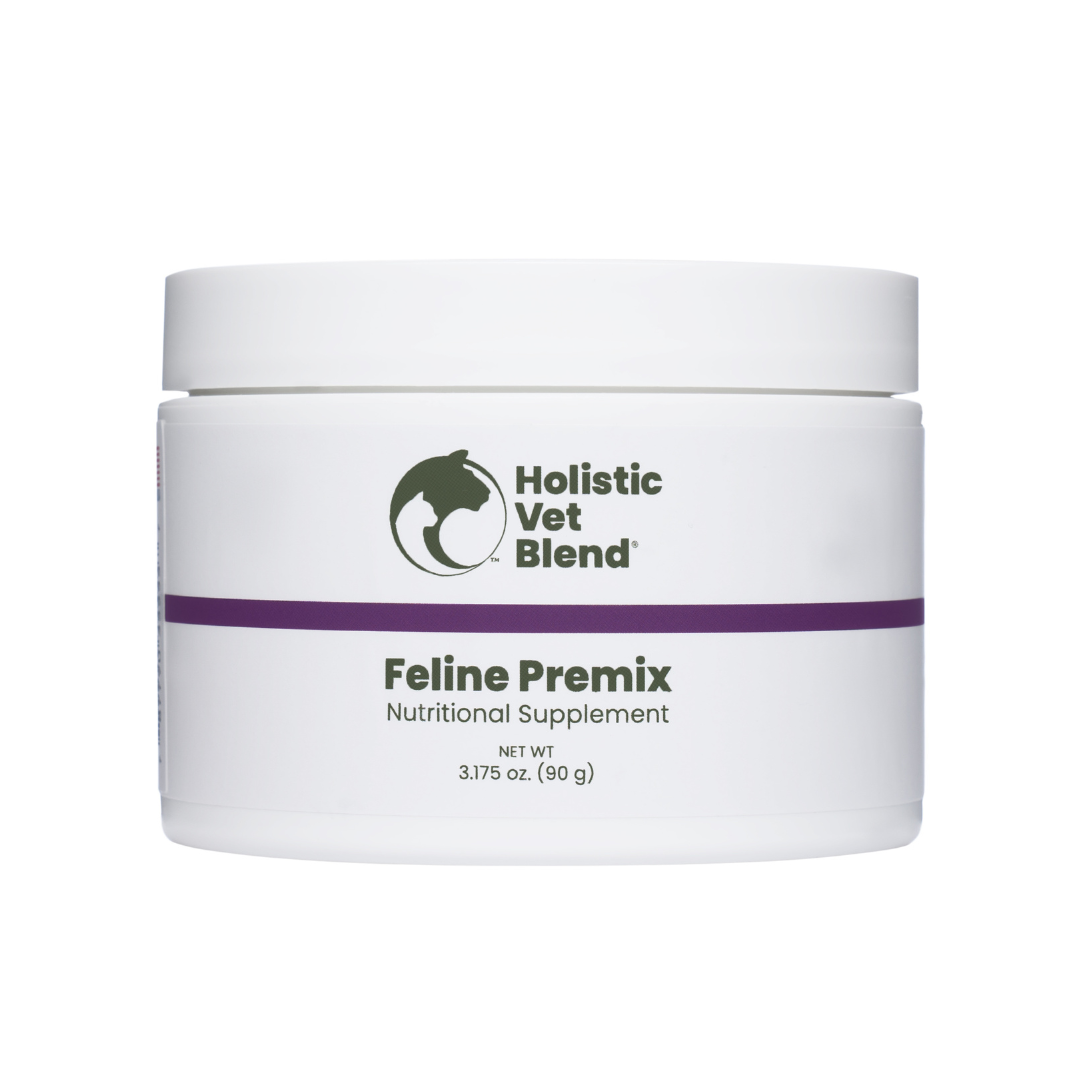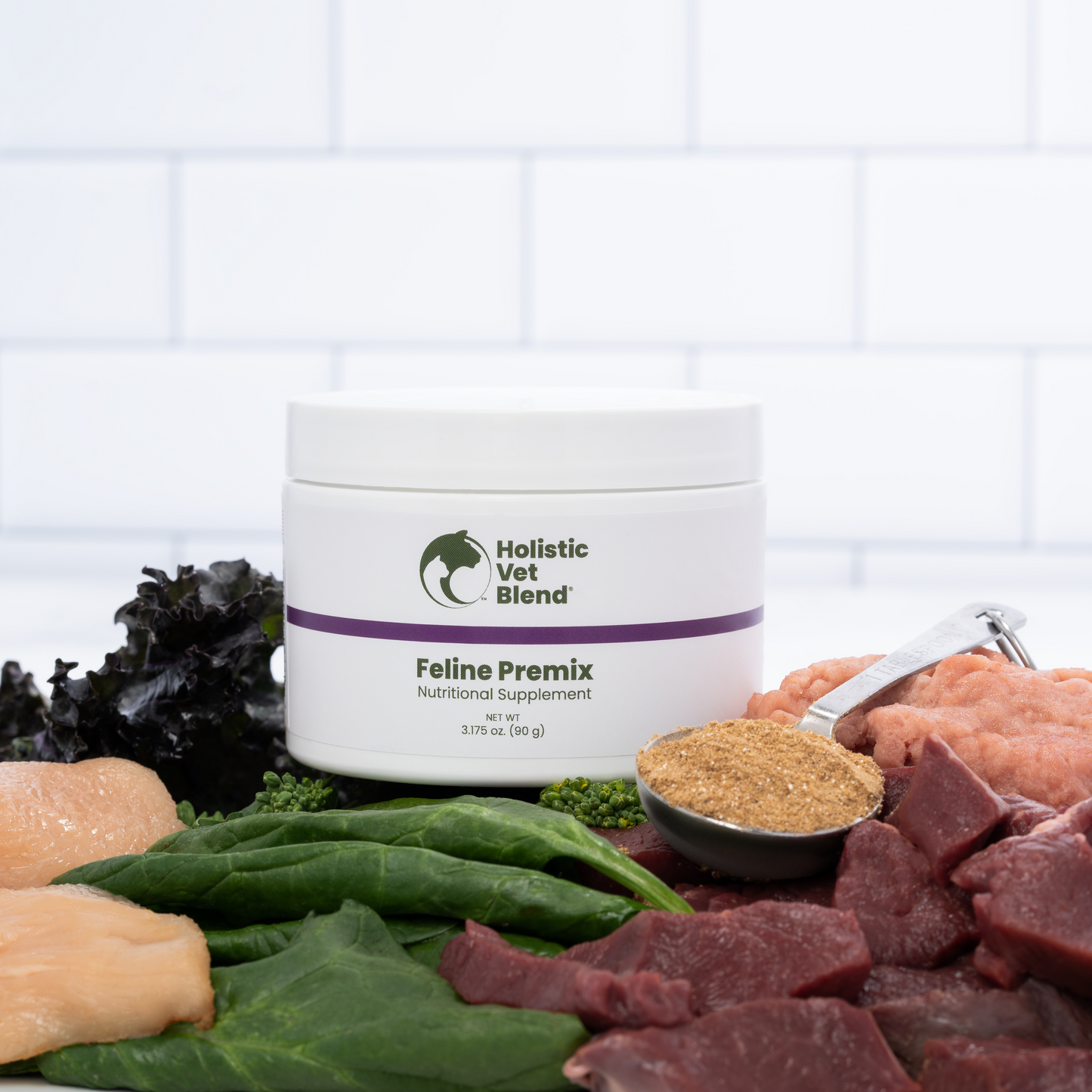
Did you know that one out of three dogs suffer from sound sensitivity or fear of loud noises? It's more common than you think, and canine anxiety disorders from traumatic experiences to repeated exposure to fireworks, thunder, and even loud vehicles like trash trucks!
In this blog post, we will cover some behavioral and environmental strategies used to calm dogs with a fear of fireworks or noise phobia, as well as pharmaceutical medications such as trazodone and alternative methods for fear.
Do cats have fear of fireworks?
As opposed to dogs who might pant, pace, tremble, and eliminate in the house, cats are more likely to hide, so the perception may be that they are not exhibiting severe anxiety. One study in New Zealand showed they are just as likely to suffer from increased anxiety during fireworks.
What are the signs of increased anxiety in dogs and cats with noise phobia?
Dogs may show mild signs such as increased panting, trembling, lip licking, yawning, pacing, eliminating in the house, and following their owners. In extreme cases, they may hide, try to escape, or panic and exhibit destructive behavior.
Cats, on the other hand, are more likely to hide.
What breed of dog is most likely to have noise phobias?
Herding dogs are more prone to developing noise phobias.
Tips to Help Dogs With Phobias
Dogs with moderate to severe anxiety from fireworks, thunder, or other loud noises will need to work with their veterinarian as well as an experienced trainer to best manage their issues.
Noise phobias tend to worsen with repeated exposure and lack of intervention. Ideally, one would avoid these stressful events when possible. One might go out of town around the time of fireworks celebrations. In the case of thunderstorms, this is not possible, and in some neighborhoods, fireworks can also be unpredictable and difficult to avoid in many neighborhoods.
Interventions that can help along with medication are:
- Anti-anxiety wraps: Thunder Shirts or Storm Defender wraps
- Calming supplements
- Species-specific pheromones
- Massage, acupuncture
- White/brown noise or calming music
- Lavender essential oil (a few drops diffused into the area, not on the pet)
While working through the issues, try to ignore the behavior when it begins, as you do not want to condition fear and anxiety with attention.
Desensitization and classical/operant counter-conditioning using recordings can be done for short periods on calm days. Working with a trainer, veterinarian, and behaviorist is key when a dog has severe anxiety.
Offer a food-stuffed toy as a distraction. Chewing may decrease stress while classical counterconditioning is implemented.
A consistent routine of exercise, play, training, and meal times can help dogs with anxiety cope better.
Obviously, you don't want to give your dog medication forever, but it may be necessary in severe behavioral disorders and for dogs with generalized anxiety and separation anxiety.
What is classical conditioning?
You teach a dog from a young age if there is a loud sound, something good will happen. You create a positive association with fireworks by giving high-value rewards and playing with their favorite toys when loud noises such as thunder or fireworks occur.
The problem with this is you might not be there when a thunderstorm happens.
Safe place training
Retreating to a safe area can be taught when frightening sounds occur. This could be a crate, bed, or closet. Pheromone diffusers can be used in the area for additional calming.
Here is a link to a video that shows how to use this training.
Drugs can assist with desensitization
Using drugs can help with anxiety and facilitate the training process.
Some dogs need mainstay medications such as Fluoxetine/Reconcile and Clomipramine/Clomicalm (especially if they have separation anxiety as well).
Additional ways to calm your cat or dog
Establish a safe place to go that is insulated as much as possible from the hustle and bustle of the holidays and fireworks booms and flashes.
Some methods to help with the desensitization process:
- Thundershirts, calming wraps
- Calming pheromones such as Feliway for cats and DAP (Dog Appeasing Pheremones)
- Lavender diffused into the environment (use care with cats as they are sensitive to essential oils)
- CBD is not enough to overcome noise phobia but may be helpful in very mild cases or when there is mild anxiety

How does trazodone in dogs and cats work?
Trazodone helps to boost serotonin, the "feel good" chemical in the body.
Trazodone is used for its sedative effects and as an anti-anxiety drug.
Trazodone is also used for anxiety during transport in cats and to ease fear during veterinary visits.
Trazodone is also prescribed during the postoperative period to facilitate calm during confinement.
Drugs such as clomipramine/Clomicalm and fluoxetine/Prozac are selective serotonin-reuptake inhibitors. They also boost serotonin production when prescribed by your veterinarian for generalized anxiety.
Your veterinarian may add trazodone to an SSRI when anxiety cannot be controlled with an SSRI alone. The dose may be adjusted as giving trazodone and an SSRI together can cause serotonin syndrome if the dose of trazodone is too high. Pet exhibits agitation, vomiting, and diarrhea potentially.
Main Uses of Trazodone for Dogs
Trazodone helps your pet stay calm during difficult moments. Generally prescribed to dogs whose owners want short-term stress relief for a visit to a vet or groomer or when they think fireworks are going to start locally.
Trazodone Dosage for Dogs
Trazodone can be given with or without food. Giving it with food may lessen the likelihood of nausea.
Cats are generally dosed 12.5 to 25 milligrams, depending on their size.
Trazodone dosages for dogs can vary depending on the specific needs of the animal and the size of the animal being given. Your veterinarian will prescribe based on your pet's unique circumstances. Dogs less than 20 pounds generally receive 25 mg. Dogs 20-50 pounds generally receive 50-100 mg. Dogs over 50 pounds generally receive 100-200 mg. Dogs over 100 pounds generally receive 200-300 mg.
It is best to test the Trazodone dosage initially prescribed to see its effect on your pet prior to anticipated stressful events.
Potential Trazodone Side Effects in Dogs and Cats
Most pets do not have an issue with Trazodone causing serotonin syndrome. This can happen when trazodone is combined with other SSRI medications. Veterinarians will adjust the dosage range to avoid this.
Although it is more likely to cause sedation, Trazodone can also cause paradoxical agitation and vocalization. This is why it is important to test it before an anticipated stressful event. Use care when giving it with other drugs that cause sedation. Trazodone can also cause low blood pressure.

Trazodone Overdose in Dogs, Can a dog overdose on trazodone?
Call the National Animal Poison Control Center at 1-888-426-4435 if you cannot reach your veterinarian.
Most dogs do not have an issue with Trazodone causing serotonin syndrome unless it is combined with other SSRI medications. Rely on your veterinarian to adjust the dosage of trazodone when used with other SSRIs. Never attempt to do this yourself
How quickly does trazodone take effect in dogs?
Trazodone begins working within 2 to 4 hours.
For longer-term treatment of anxiety, it may take 2-3 weeks. This, along with training prescribed by a behaviorist or trainer, may facilitate the training process.
How often can I give my dog trazodone?
Trazodone is mostly used as one of the short-term anxiety medications.
Some veterinarians may prescribe trazodone long-term (generally given twice a day with or without food). It can take up to two weeks to achieve maximum anxiety relief when trazodone is used long-term.
It is often prescribed daily after orthopedic procedures to maintain calm.
How long does trazodone last in dogs?
Trazodone has long-term benefits for dogs, although it may take six to 24-hour periods. This time varies according to dog size, age & overall health. Consult your veterinarian before you give your dog trazodone to determine the proper dose and treatment time.
Is it safe to give a dog trazodone every day?
Trazodone is best given as an "event-specific" drug as there are better alternatives to treat behavioral disorders that have a more constant or generalized manifestation.
Can trazodone cause diarrhea in dogs?
Most dogs do not experience side effects. Sedation, aggressive food seeking, nausea, vomiting, and diarrhea in some cases. Your veterinarian will often start with a lower dose to acclimate your pet to trazodone.
References:
(1)AR Dale, JK Walker, MJ Farnworth, SV Morrissey & NK Waran (2010) A survey of owners' perceptions of fear of fireworks in a sample of dogs and cats in New Zealand, New Zealand Veterinary Journal, 58:6, 286-291, DOI: 10.1080/00480169.2010.69403












